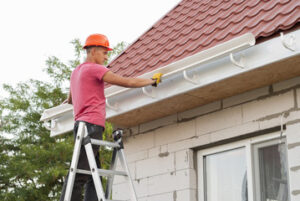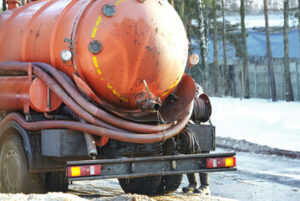Gutter systems play a vital role in safeguarding homes from foundation damage. However, the installation process is intricate and requires expertise and precision to ensure long-lasting functionality.

Begin by measuring your home’s roof line for the highest spot. Then, use a chalk line to mark the gradual slope across your fascia boards. Contact Gutter Installation Gainesville FL for professional help.
When it comes to home maintenance, gutter installation is one of the most cost-effective projects a homeowner can undertake. It protects the foundation of your home from water damage, helps maintain the value and integrity of your roof, and prevents stagnation that could lead to leaks and rot. Regular inspections and repair of your gutter system is an important part of your home’s overall health.
Gutter installation requires accurate measurements and a thorough understanding of the intricacies of your roof structure. For example, flat and steep roofs require different installations to ensure proper drainage. A professional will be able to adapt the process to your specific home and roof. They will also be able to advise on the best gutter material for your budget and weather conditions.
Once the new gutters are installed, the last step is to connect them with downspouts and elbows to direct the rainwater away from the house. It’s important that you use waterproof gutter sealant anywhere you join two pieces of gutter together. Once the sealant has dried, you can test your new gutters with a garden hose to see if water flows properly and where it should go.
A well-maintained and properly functioning gutter system can save your house from costly repairs in the long run, including water damage to the foundation, rotting fascia boards, sagging gutters, and flooded basements. If you notice signs of wear and tear, such as rust, cracks, or separation from the roof, it’s important to repair them promptly.
A professional gutter installer can provide you with a comprehensive estimate that includes the cost of materials, labor, and cleanup. Make sure to compare prices before making a decision. Look for a contractor with experience, certifications, and customer satisfaction ratings. The right company will be able to deliver a high-quality gutter system that will last for years.
Longevity
Gutters play an invisible role, directing rainwater away from your home, safeguarding walls and foundations from erosion. They are often overlooked until they need to be repaired or replaced, but they are a critical part of your roof and structure. Choosing the right gutters, keeping them clean and preventing clogs, and making timely repairs are essential for longevity.
The lifespan of your gutters is influenced by many factors, including the material they are made from, the environment they live in, and how well they were installed. For example, aluminum gutters, which are common in homes, have a life expectancy of 20-30 years, while copper gutters can last for decades.
Whether your gutters are made from copper, aluminum, galvanized steel, or vinyl will also influence their longevity. Some of these materials are more durable than others, and a quality roofing contractor will consider your personal style and budget when recommending a gutter type for you.
Another factor influencing gutter longevity is the environmental conditions of your area. Areas with high rainfall and harsh winter weather put a lot of strain on gutter systems, which can shorten their lifespans. Moreover, improper installation can lead to issues such as sagging and leaking. Regular inspections and timely repairs can extend their lives significantly.
Signs that your gutters aren’t working properly include water marks on structures around your house, puddles or stains in the yard, and overflowing gutters during rainstorms. You may also notice rust or cracking. If you see any of these signs, it’s time to replace your gutters.
While repairing your gutters is cheaper than replacing them, it’s important to compare the long-term cost of both options. A professional assessment by a reputable service, such as Holy City Gutterworks, can help you decide if it’s more financially advantageous to repair your gutters or replace them. In most cases, replacement is more cost-effective than ongoing repair expenses. The good news is that gutters don’t need to be replaced every year! A quality gutter system can serve you for decades if it’s well maintained. Gutter covers help to prolong their lifespan by keeping leaves and other debris out of your gutters, but they should still be open enough for water to flow through during storms.
Safety
Gutter installation involves working at heights and handling heavy materials, making it a hazardous job for the untrained. Therefore, homeowners must possess a thorough understanding of safety protocols and follow them to the letter. This includes using the right ladder, assessing its condition before use, wearing protective gear, and having a buddy system when climbing. Moreover, taking frequent breaks and staying hydrated are essential to avoid heat exhaustion and ensuring a safe environment.
During the preparation process, gutter installation contractors take into account local weather patterns and roof types to ensure that the final product is durable and functional. For instance, steep roofs might require a more extensive guttering system than those with level roofs. In addition, they consider the color and style of the home to choose a gutter system that complements its aesthetic. This way, they can ensure that the new gutters blend in seamlessly and provide optimal functionality for years to come.
Once the gutters are in place, it is essential that they remain free from debris to prevent clogging and overflow. If the downspouts are clogged, water may collect around the foundation of the house and cause structural damage. On the other hand, when the gutters are properly directed to drain out and away from the home, it can protect the landscaping and the foundation from erosion.
Moreover, gutters are also vital for protecting the roofing materials from damage and extending their lifespan. If the gutters are not properly installed or if they are clogged with debris, water can penetrate the roofline and shingles, causing rot, mildew, and mold. Additionally, if the gutters do not properly direct water out of the home, it can cause flooding, damage to landscaping, and structural damage.
The most important aspect of gutter installation is the downspouts, which are responsible for directing water away from the foundation of the home and into drainage systems. This ensures that the house’s foundation is not eroded and protected from floods and mudslides. Without the proper downspouts, water will accumulate around the house and cause structural damage, as well as soil and gravel erosion, which can lead to a weak and unstable foundation.
Expertise
Gutter installation is a highly complex project that requires professional expertise to ensure quality and safety. Considering the intricacies involved, it’s best to hire a gutter installation service provider who is fully licensed and insured. In addition, they should have extensive experience in the field. This includes installing different types of gutters and working with various roof structures. Additionally, they should be familiar with OSHA guidelines. This can help them improve the safety of their employees and customers.
Gutter installers should also know how to assess and prioritize tasks. They should be able to determine the amount of time it will take them to complete a project and set clear expectations. They should also have the right tools for the job. This includes ladders, drills, hammers, and other equipment. They should also be aware of the various effective sealing and fastening techniques that will ensure a watertight gutter system.
The chief responsibility of a gutter system is to channel rainwater away from the home’s foundations and other structures. This will protect the house from structural damage, mold growth, and other problems that can be caused by excess water. Gutter systems are designed to work in conjunction with other elements of the structure to keep water from accumulating around the foundation.
Additionally, a gutter system can reduce the risk of pest infestations, as well as enhance the curb appeal of the home. This can be a major selling point for prospective buyers. Gutter installations are an excellent way to increase the value of a home, but it’s important to choose the right contractor for the job.
Whether you’re building a new house or remodeling an old one, gutters are essential for protecting your investment. A well-maintained gutter system can protect the home from water damage and withstand harsh weather conditions. A reputable gutter contractor will offer a comprehensive warranty and regular inspections to prevent future issues. They will also be able to provide the best solution for your unique needs. Additionally, they will help you save money on materials by paying wholesale prices.



